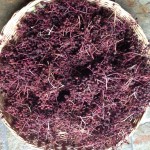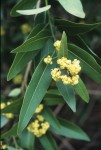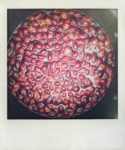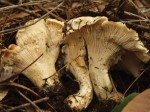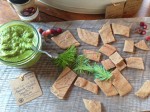Winter Foods in the Woods
It seems as if the cold of winter brings with it a lack of fresh foods. But there are many choices still available in the woods. Here are a few of my favorite wild winter foods.
1) Toyon Berries: With bright red berries signaling the approach of the holidays, Toyon berries are certainly a beautiful, forgotten food. Gather when they are dark red in color and dry for the best flavor. Grind and use as a spice on meat, fish or tofu or make into a delicious cider. Cover dried berries with water. Bring to a boil and simmer for 20-30 minutes. Strain & sweeten if desired.
2) CA Bay Leaves: Use these fragrant leaves in soups or add to oil, heat and then strain, reserving the oil. Use the oil as a base for salad dressings or for cooking meat, fish or tofu. Enjoy the native substitute to the Mediterranean species fresh or dried, using about 1/2 of the amount listed in standard recipes.
3) Rose Hips: Gather and remove stems and ends. Boil for 30 minutes and strain for an immune-boosting tea, high in vitamin C or try making a rose hip mead.
1 lb wild Rose hips (makes 1 gallon Rose hip concentrate) 1 quart raw honey
1 quart filtered water
Wine culture or 1⁄2 tsp bread yeast
Airlock Siphon hose
METHOD
Concentrate
– Make Rose hip concentrate by grinding Rose hips
roughly in a blender for a few minutes.
- – Bring 6 cups water to a boil and add blendedRose hips.
- – Turn off heat and let stand for several hours untilwater has cooled.
- – Strain through cheesecloth into mason jars.Mead
– Pour 1⁄2 gallon Rose hip concentrate and all remainingingredients into a gallon jar and place airlock on thetop of the jar.
- – Let stand 3 weeks or until the bubbling slows.
- – Siphon off into smaller airtight jars and keeprefrigerated until ready to serve.[94] NOTE Makes a 12-14% alcoholic beverage.
4) Mushrooms: These wonderful forest gems are delicious when correctly identified and potentially fatal when not. Use caution and only consume mushrooms when 100% confident on their edibility.
Identify the White Chantrelle by its trumpet-shaped fruiting body, blunt gills, smooth white cap, solid stem, and pine-fruit fragrance. It is essential to recognize the characteristic blunt gill edges of the Chanterelle to avoid confusion with toxic look-alikes.
CHANTRELLE MUSHROOM SOUP
(Vegan, Gluten-Free)
1 lb wildcrafted Chantrelle mushrooms 1 – 2 cloves of garlic, finely chopped 3 cups vegetable broth
Oil (almond, avocado, or safflower) Salt as desired
Wild greens as available
METHOD
– Wash and dry Chantrelles, removing any debris.
- – Sauté Chantrelles in a large, covered saucepan onmedium heat.
- – Lower heat and simmer for about 15 minutes until thewater has evaporated.
- – Add oil and chopped garlic and continue to sauté for5 more minutes.
- – Mix in broth and wild greens and simmer to desiredtenderness.[131]
5) Fir: Even though the tips have the strongest lemon flavor and vitamin C in spring, they are delicious year round as a tea, pesto or even vegan sorbet. To make a pesto, just substitute the tips for basil.
To make the vegan sorbet, follow this recipe from Treat’s, Nevada City:
3 cups water
1 cup sugar
1 quart fresh or frozen Douglas-Fir tips plus a few extra to use as garnish
METHOD
– Bring water and sugar to a boil, stir, and turn off heat. – Add Fir tips and steep covered for 30 minutes.
– Keep liquid and use a fine mesh strainer to remove tips.
– Chill overnight in refrigerator.
– Freeze in ice cream maker according to manufacturer’s directions.
– Garnish sorbet with extra Fir tips and enjoy.




